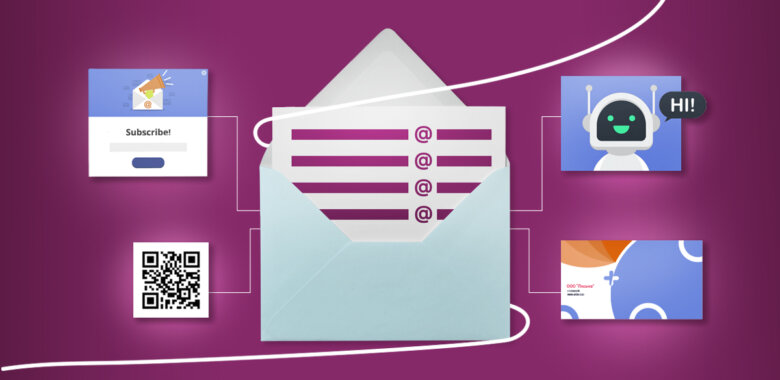Useful tips and best practices for collecting email addresses
Even the perfect strategy doesn’t guarantee collected emails. So, if you want to get the results you’re going for, you might want to keep the following tips in mind.
Offer an incentive
As already mentioned above, one surefire way to get people hyped up to join your email list is to give them something back for their subscription. That something can come in the form of discounts, freebies, and exclusive content, among other things.
Make it seem like a win-win situation for both of you. Think about it – you’re getting something from them, and you give them something back. Just make sure not to overdo it.
Make it really easy to subscribe
Keep things as simple as possible. Nothing puts a potential subscriber off like a complicated sign-up sheet that is way more trouble than it’s worth. Instead, you can go for an optional automatic subscription that activates once you purchase an item or sign up for the website. Clicking a button that says subscribe and inputting your email in a textbox on the screen are also viable options.
You should also make sign-up sheets prominent and easy to locate. That way, those interested in receiving emails from you won’t need to go digging around to look for them.
Ask for it
This is simple enough. Ask for your visitors’ emails and consent. Ensure that your intention to get their email and provide them with promotional information and offers is clear.
There are many ways to go about asking for it. You can do it as soon as they enter your website. You can also remind them that it is an option when they create an account or after they have already spent a specific amount of time on your website.
Create a sense of urgency
Millions of people have FOMO, which stands for fear of missing out. You can take advantage of this phenomenon and create a sense of urgency to encourage people to sign up for your newsletter. For instance, if a visitor subscribes in the next two hours, they might receive a special discount code. This can trigger the impulsive part of your customer’s brains and give them a well-meant nudge to join your mailing list.
Analyze the results and optimize
After you’ve decided which approach you want to go with, build a system that monitors its performance. See if you’re getting the number of subscriptions that you want.
If you do not see the numbers you want, find ways to improve or change your approach to the whole thing. And if you are getting desirable results, look for even more effective ways to grow your mailing list.


















